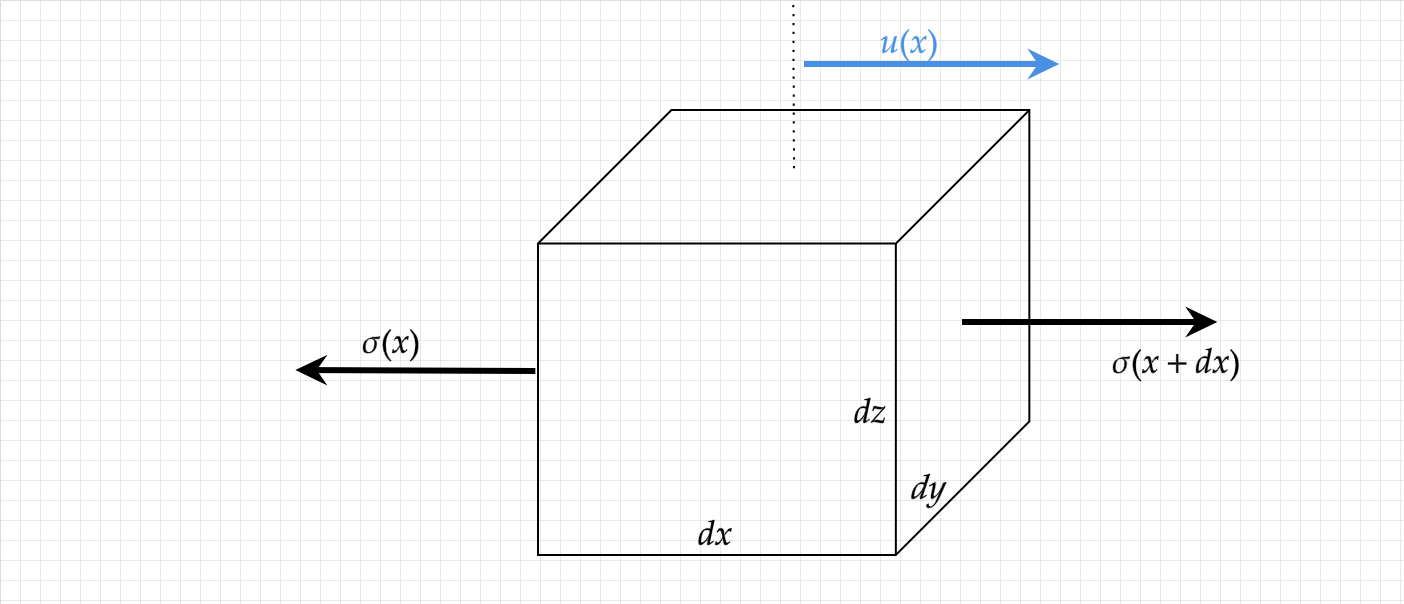Stress Waves in Solids
9. Stress Waves in Solids¶
The Wave equation
Consider a “1D” (i.e. \(L>>\phi\)) rod whose end is extended following \(V(t)=\dot{u}\)
Since the body can not be said to be in rest the sum of forces on the body is given by
Looking at an infinitesimal element within our rod we can construct the free body diagram:

from which we can see that
taking \(dx \to 0\) we obtain:
Assuming linear elasticity , and recalling that \(\epsilon=\frac{\partial u}{\partial x}\) the above equation can be written as
or
Note
Question
When we conduct a simple tensile test, waves are constantly running through the system. Still we treat this as a Quasi-static problem. Why?
We can define a (scale dependent) characteristic time by considering
For the same bar, we can write the natural frequencies of longitudinal vibration as:
What should we require of the natural frequencies in our system so that they will not interfe with our measurement?
given that our measured phenomena is characterized by a frequency \(f\) we can require that
(why \(n=1\)?)
or
